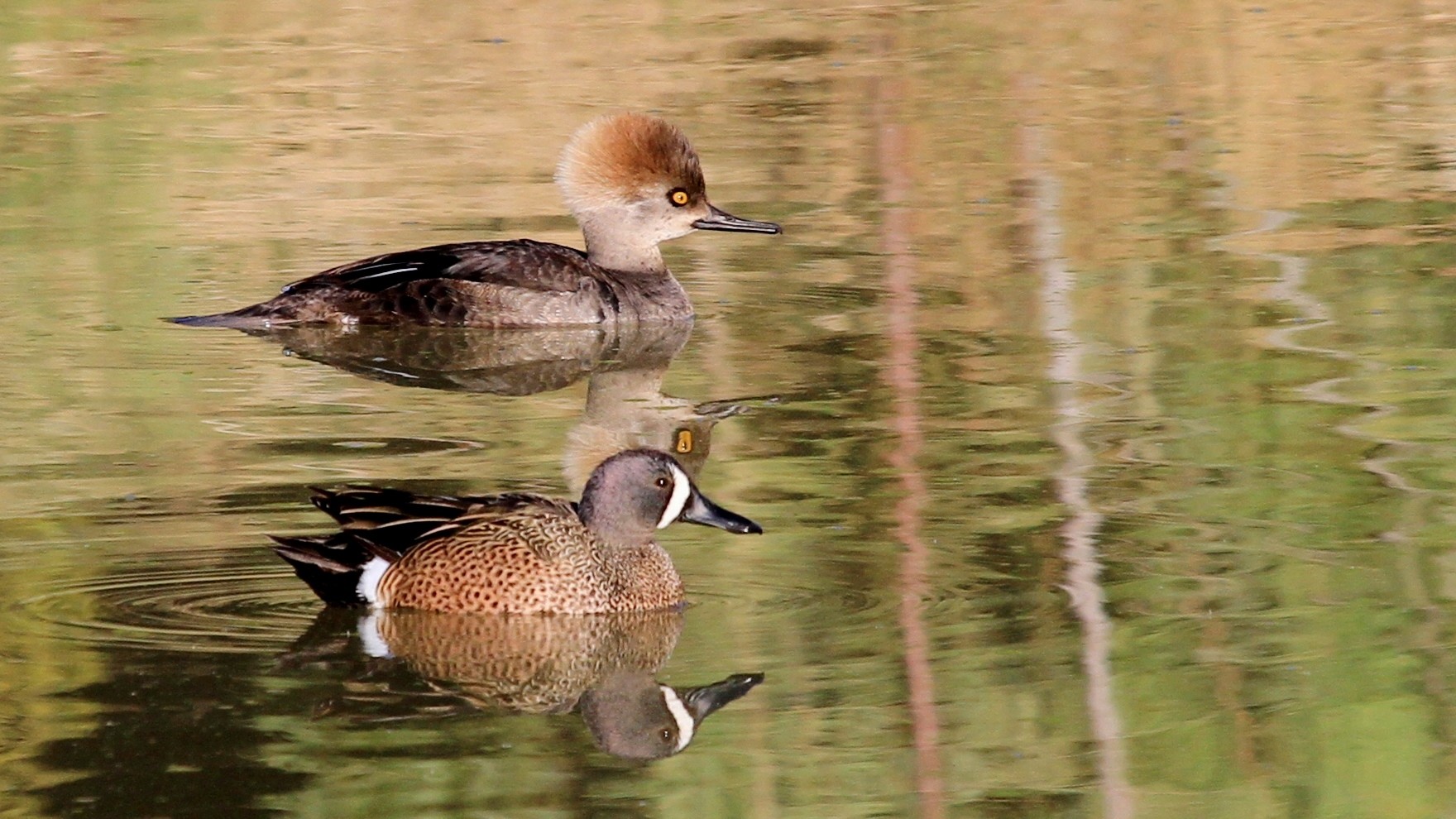Blue-winged Teal
A species of Anas Scientific name : Spatula discors Genus : Anas
Blue-winged Teal, A species of Anas
Botanical name: Spatula discors
Genus: Anas
Content
Description People often ask General Info
 Photo By panza-rayada , used under CC-BY-SA-3.0 /Cropped and compressed from original
Photo By panza-rayada , used under CC-BY-SA-3.0 /Cropped and compressed from original Description
The blue-winged teal is 40 cm (16 in) long, with a wingspan of 58 cm (23 in), and a weight of 370 g (13 oz). The adult male has a greyish blue head with a white facial crescent, a light brown body with a white patch near the rear and a black tail. The adult female is mottled brown, and has a whitish area at base of bill. Both sexes have sky-blue wing coverts, a green speculum, and yellow legs. They have two molts per year and a third molt in their first year. The call of the male is a short whistle; the female's call is a soft quack. 
Size
23 - 41 cm
Life Expectancy
17-23 years
Nest Placement
Ground
Clutch Size
6 - 14 eggs
Incubation Period
1 brood
Number of Broods
19 - 29 days
Nestling Period
40 days
Feeding Habits
Blue-winged Teal's diet includes molluscs, crustaceans, seeds, and aquatic insects. They consume sedge, grass, pondweed, smartweed, duckweed, widgeongrass, and muskgrass, favoring protein-rich foods like midge larvae and snails, especially when laying eggs. In winter, blue-winged Teal primarily feeds on grains like rice and millet.
Habitat
Blue-winged Teal typically resides in wetlands comprising marshes, lakes, and ponds, alongside streams with lush emergent vegetation. Preferring temperate to subtropical climates at lower altitudes, they utilize cover from grasses for nesting. During winter in the U.S., they choose waters rich in organic matter. Their habitat extends to prairie potholes, parklands, and prairies, avoiding high-salinity areas, but including estuaries and mangroves south of the U.S.
Nest Behavior
Females meticulously select the nest site, sometimes taking several days, while males wait nearby. Nest construction and egg-laying follow suit, with the female solely responsible for incubation and both parents caring for the young.
Nest Characteristics
The blue-winged Teal's nest is often hidden, located at least a foot above water, surrounded by vegetation. The female scrapes a circular depression lined with grass, down, and feathers, with a finished size of 8 inches across, 6 inches inside diameter, and 2 inches deep.
Dite type
Omnivorous
People often ask
General Info
Feeding Habits
Bird food type
Sounds
Call
Recording location: United States
Call
Recording location: United States
Behavior
Blue-winged Teal exhibit distinctive dabbling behavior for feeding, rarely diving but often submerging their heads or upending in the water. Their social interactions feature elaborate courtship displays, such as male head pumping and rapid head dipping, often leading to mate selection. Blue-winged Teal's courtship can involve multiple males vying for a single female until she chooses. Interestingly, pair bonds dissolve during incubation and new bonds form in winter or spring. Unique among ducks, blue-winged Teal less frequently partake in forced copulations outside of their mating pair.
Distribution Area
The range is all of North America except western and northern Alaska, northern Yukon Territory, northern Northwest Territories and the northeastern area of Canada. Blue-winged teal are rare in the desert southwest, and the west coast. The breeding habitat of the blue-winged teal is marshes and ponds. The breeding range extends from east-central Alaska and southern Mackenzie District east to southern Quebec and southwestern Newfoundland. In the contiguous United States it breeds from northeast California east to central Louisiana, central Tennessee, and the Atlantic Coast. The western blue-winged teal inhabits that part of the breeding range west of the Appalachian Mountains. The Atlantic blue-winged teal nests along the Atlantic Coast from New Brunswick to Pea Island, North Carolina. They migrate in flocks to winter in to the south of its breeding range. During migration, some birds may fly long distances over open ocean. They are occasional vagrants to Europe, where their yellow legs are a distinction from other small ducks like the common teal and garganey, and in recent years have been annual vagrants in Britain and Ireland. The blue-winged teal winters from southern California to western and southern Texas, the Gulf Coast to the Atlantic Coast, the Caribbean, and south to Central and South America. It is often seen wintering as far south as Brazil and central Chile. 